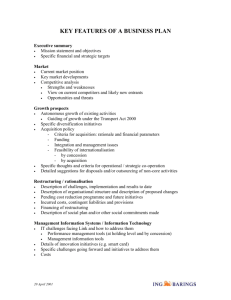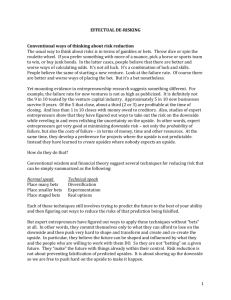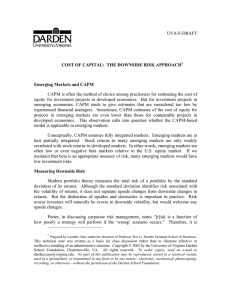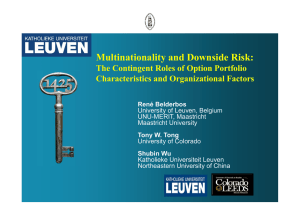Revision des Kartellgesetzes – was wird sich ändern?
advertisement
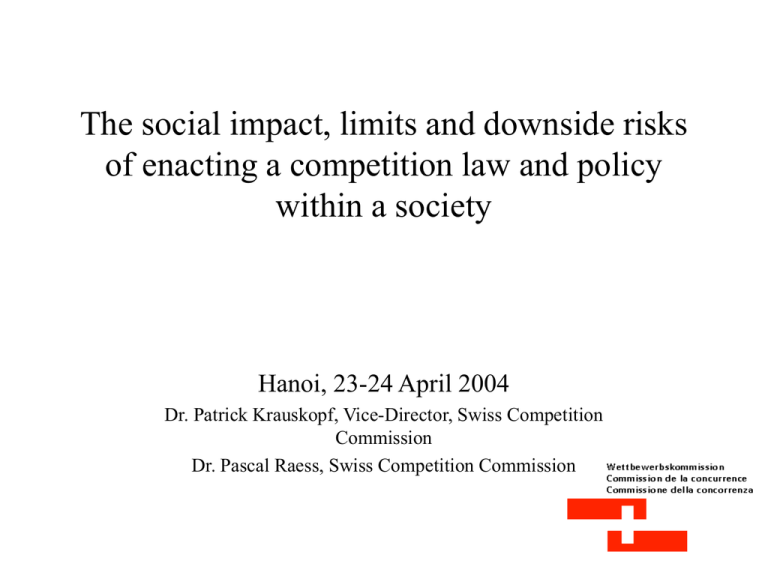
The social impact, limits and downside risks of enacting a competition law and policy within a society Hanoi, 23-24 April 2004 Dr. Patrick Krauskopf, Vice-Director, Swiss Competition Commission Dr. Pascal Raess, Swiss Competition Commission Structure of Presentation 1. Competition Law & Policy 2. Legal / Economic / Social / Cultural Frameworks 3. Social Impact 4. Limits & Downside Risks 5. Conclusion 1. Competition Law & Policy • Competition law encompasses – – – – Horizontal agreements Vertical restrictions Abuse of dominance Merger control Competition Policy • … is much broader than competition law: – Deregulation – Privatisation – State-aids and subsidies – Trade policy – Investment policy Consistency problem 2. Environment for competition Law & Policy • • • • Legal framework Economic framework Social framework Cultural framework Legal Framework • • • • • Private property Contract law Transparent procedure rules Intellectual property rights (IPR) Etc. Economic framework • Markets should be opened to competition (privatisation, deregulation) • Private sector / public sector distortions should be removed • Subsidies / State-aids should be carefully analysed • National preference Social framework • • • • • Labour mobility Unemployment « insurance » Regional policy Education Health Cultural framework • Profit as driving economic force • Entrepreneurship • Legal and economic training of the relevant Government bodies / enforcement agencies • Civil society awareness (consumers, businesses, etc.) Competition culture 3. Social Impact (I) • Unemployment decreases in the long run (although it might increase in the short run) • Costly transition period (structural change) • Sectoral prices might decrease (improved competition, increased productivity) Social Impact (II) • Internal migration (e.g. rural urban) • Redistribution of wealth (e.g. via privatisation) • Environmental policy (e.g. pollution, externalities on health) • Land use policy 4. Limits & Downside risks (I) • Potential contradictions with industrial policy (e.g. building « national champions ») • Potential waste of comparative advantages with nations without Competition law (attracting FDIs becomes more difficult) • Advocates of « one shot » introduction of new competition law vs. « phased » introduction of new competition law (i.e. merger control and abuse of dominance in a second phase) Limits & Downside risks (II) • « Unrealistic » business expectations: Competition law aims at protecting competition (not companies, notably SMEs) • « Unrealistic » Consumer expectations (« Deflation », sharp rise in purchasing power) • Institutional design of authorities responsible for competition law and policy enforcement (transparency, accountability, independence) Limits & Downside risks (III) • Lack of training & experience of new competition authority • Scope of competition law is too limited • Application of « Per se » rules 5. Conclusion • Competition law & policy is only one aspect of economic policy / Consistency with other policy goals • The benefits more than compensate potential harms • Risks of errors are limited with a « rule of reason » approach • Capacity building • Long term cooperation


